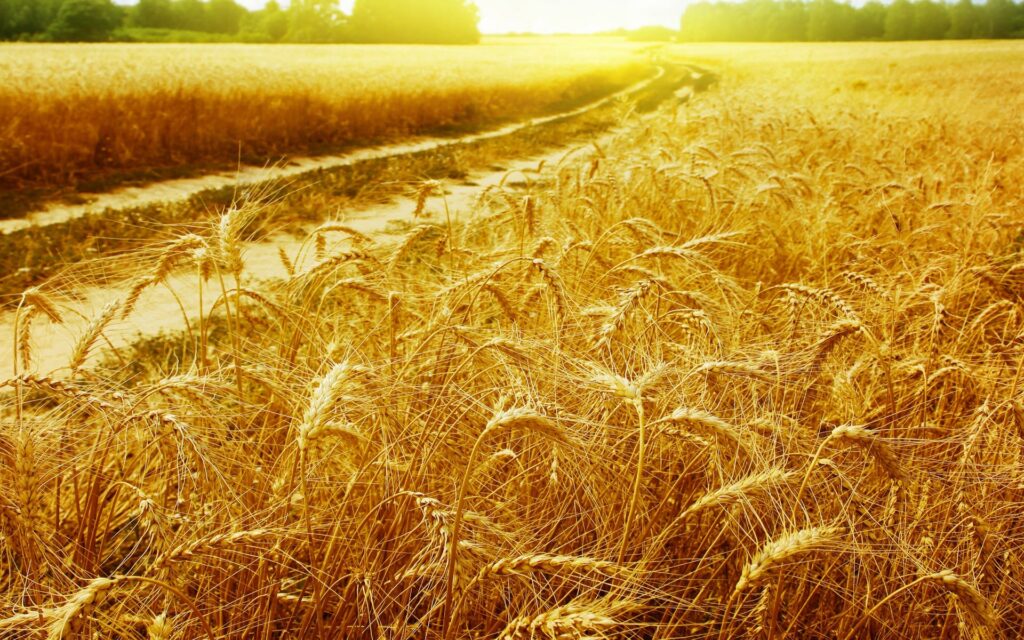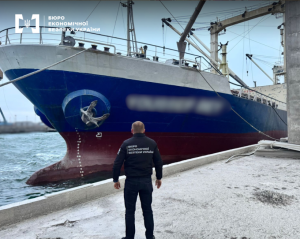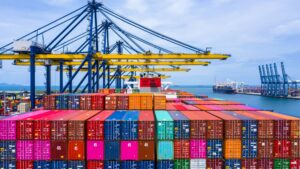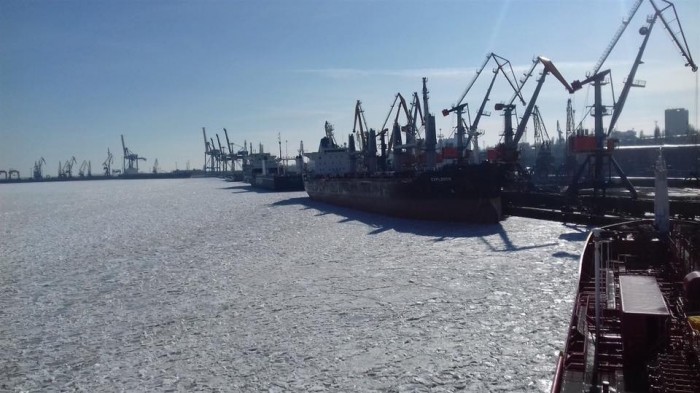“No one has a crystal ball to predict the market.” Interview with Yurii Havryliuk

What consequences will the energy crisis bring? What is happening on the grain and oilseeds market now, and what are the future forecasts? How to predict market changes in the modern world? And how can traders build relationships with farmers? Yurii Havryliuk, Director and partner of the consulting company Barva Invest, commented specially for USM about this and many other things.
How will the current energy crisis affect the grain and oilseeds market?
The energy crisis affects all areas of our life, and the agricultural sector – not less than others. With the only condition that the crisis has a double effect on the agricultural sector: firstly, it provokes an increase in production costs, since the price of fuel and lubricants, for example, gas, which is used both for drying and for the production of fertilizers, increases.
Secondly, the cost of the grain itself increases, since it correlates with some energy sources: for example, oil and soybeans/rapeseeds are linked through biodiesel. So is corn, because ethanol is produced from it. Therefore, there is a connection. Certain industries that are not related to the agricultural sector may be more affected as a result of such a crisis. At the same time, agro has a “discount” in this situation due to the fact that products of further production also grow in price.
Since July 1st, 2019, imports from the Russian Federation of a number of products, in particular, fertilizers, have been banned in Ukraine. Is this prohibition respected?
If there is such an import, then it is illegal, it is smuggling. I have not heard about this, but in a situation when the cost of fertilizers is growing globally in the world for everyone (this is not only our local history), there is a high demand for fertilizers, and now the market is already experiencing a certain deficit. In the future, this demand will only increase, because many factories have stopped and are not producing at this stage. This puts us on a level playing field with other buyers.
Accordingly, why should Russia come up with some ways to sell these fertilizers to us, if it can easily sell to other markets, without creating any illegal schemes? To do this, you need to smuggle, repackage, forge a bunch of documents, then import. In this situation, it is easier – calmly and comfortably to import some fertilizers from Europe or Belarus, and then honestly and legally sell them on the territory of Ukraine.
In September, the United Nations Food Organization (FAO) confirmed that food prices were rising. Will prices go up even more?
To begin with, the global reason for the rise in prices is not initially hidden in the agricultural sector itself. In connection with the desire of all developed countries to quickly get out of the coronavirus crisis, it was decided to actively “sponsor” this market and support it financially. Accordingly, a fairly large amount of money was poured into the system. This naturally provokes inflation at absolutely all levels.
That is why we see that the amount of money in the system is growing, but the number of goods in the world at such a rate does not increase, then there is more money per unit of any commodity. This is, in fact, our inflation. And then it “feeds” itself: a single product grows, for example, gas, and it drags along the cost of fertilizers, and the cost of fertilizers entails the cost of producing these products. As a result, we have more expensive bread on the shelves. Therefore, this situation cannot abruptly stop, and we will still see continued growth in prices for all products.
There are other related factors that inflation has generated. But now, to stop this circle, the US and EU must stop pouring money into the system, and their financial regulators (central banks) must start raising interest rates. But there is no need to immediately expect the result, since no one will behave like that – first accelerate inflation, and then abruptly stop it. They need to bring this process to a certain level, and then gradually take this liquidity from the market. Accordingly, for the next period, with regard to agro, we do not expect prices to decline.
Further, if you look into the agricultural sector itself, then a decrease in prices can only be when Latin America reaps its harvest. Now they are actively sowing soybeans and corn, and if the weather is favorable there and the plants in the fields are in good condition, then trade will gradually increase the gross volume of cereals and oilseeds in the world – perhaps this will slightly change the balance.
Why did this situation happen at all? Last year was marked by high prices, and most of the importing countries, which are usually developing or poor, were not ready to purchase large volumes of grains and oilseeds in advance, on the assumption that the price would still drop at the time of harvest. But inflation in the world simply did not allow this situation to develop, and we saw continued growth.
What factors can affect the harvest and export of Ukrainian grains and oilseeds this season?
Now I see no reason to talk about a decrease in cultivation area. Farmers in Ukraine and in the world feel more than comfortable, since for the second season in a row we have high prices. The farmer is well provided for financially, he can even afford to expand the sown area, apply the best fertilizers, use micronutrient fertilizers, and nourish the plants. I don’t see any problems in this direction at all.
The only influence is the cost development, but the price of grain allows working with good, even close to records, profitability. Therefore, in terms of the amount of grain in the world, no problems are expected yet. But there is a weather factor that we cannot predict. A living example: this spring Brazil harvested 20 million tons less corn due to drought, just because the crop was unable to develop.
If farmers feel comfortable now, does this affect importers and traders?
First of all, these are farmers in all countries. And it also brings good incomes to the exporting countries. And importers are simply forced to accept the fact of high prices and buy according to their needs. This is a political story, and no country wants food riots. Take China, for example. Nobody knows exactly how much grain is grown there, what stocks they have, the market and traders. Analysts are forced to work not with factual information, but with certain rumors and their own assumptions.
It happens that the Chinese press, controlled by the Communist Party, issues articles that can be interpreted in different ways. And so, one of the latest news was this: they say, there is a recommendation from the Party Board to the regions so that they ensure food stability for the winter. In fact, this means that each family should be provided with a minimum food supply for this period. It means, they admit that prices continue to rise, perhaps even admit some tense geopolitical moments that will block the import of grain to China.
Each country struggles in its own way with such stories, but, in fact, the situation is quite tense and, first of all, the countries that suffer are either poor or regulated by their internal political regime.

What does the geography of grain and oilseeds export from Ukraine look like this season? Are there any new importers? Or maybe someone dropped out of the customer list?
We do not see any particular shifts, since there are now several key factors. The main one is freight: it has risen insanely in price; world trade is to some extent geographically divided. From where it is closer to bring something, from there they buy. In this situation, our traditional markets, for example, for corn, have always been the European Union, Egypt and China.
We saw a lot of activity from South Korea this season. At the time when Korea began active purchasing, we were cheaper. And this is one of the few countries that do not provide special preferences for the quality of corn, but look only at the numbers. If they can buy corn with delivery to Korea somewhere cheaper, they will buy it there. Again, they usually buy from large multinational companies, and when these companies sell corn to Korea, they immediately prescribe in the contract the option of supplying from the country of the seller’s choice. And at the time of delivery, they look at where to bring it cheaper: if from Latin America, they bring it from there, if it is cheaper from Ukraine, they take it from us. Therefore, we see no change in corn.
There is a growing demand from our closest neighbors – Turkey, the Middle East and North Africa – for wheat. And this is also due exclusively to the weather conditions in the region. The harvest of wheat and cereals was less than in previous years, plus their demand is growing more actively, so they consume more and come to us more. At the same time, traditionally, many countries of North Africa bought from France, and this year there is a rather low quality of wheat – also due to weather conditions. Therefore, we compete with them perfectly.
As for the oilseeds. The only fact that I can highlight is the European demand for sunflower as a raw material for biodiesel production. Previously, rapeseed was used for these purposes (and even now in Europe it is used by 99%). But, due to the fact that rapeseed has grown greatly due to a poor harvest in Canada, Europe has become interested in sunflower. Due to the poor harvest in Canada, from where Europe imports about 2-2.5 million tons, they are experiencing a shortage of rapeseed for processing. It is expensive and far to carry from Australia, so they buy all the main volumes of rapeseed from Ukraine and are considering alternatives. Sunflower is one of them. The ratio of the quantity, in comparison with the processing of rapeseed, is meager: tens of thousands of tons.
In October, Ukraine exported rye to Turkey for the first time since 2009. Why is rye a rare export cargo for Ukraine? Is it connected with the growing conditions, with the lack of demand from importers or the lack of demand for this crop from Ukraine?
I would not be looking for some mysteries and secrets in the situation with rye. It’s just not a popular product… You know, it’s a story like buckwheat. It is necessary that there be a culture of consumption of any product, then it is actively used. First of all, I think they, like all other countries, use rye flour to mix with wheat flour when baking pastries. All over the world, import-export of rye is just scanty, several million tons. And, as a rule, the countries that consume rye grow it themselves. And those who do not need this rye neither grow nor import it.
Therefore, I would not say that special attention should be paid to this incident. This is such a feature – somewhere they needed a little, and they bought a little. Compared to previous years, the volume seems to be large, but when compared with the amount of wheat they buy, it’s minuscule.

Which Ukrainian ports are most in demand for grain purchases among importers?
It all depends solely on where the culture is sent, and the explanation is in the calculation, in the economy. If China is the buyer of corn, then, from the point of view of freight, it is inappropriate to carry cargo there with coasters of 5-10 thousand tons. It would be more logical to load one Panamax of 65 thousand tons and send it to China. The same story is with wheat for Indonesia.
If Europe has a demand for any of our culture, then they choose, for example, Mykolaiv, because from there you can send a handysize of 25-30 thousand tons, and this also looks normal in the calculation. Small and shallow-water ports, for example, Mariupol, Kherson and Berdyansk, are used for shipping to the nearest countries like Lebanon or Turkey, which are located in the Mediterranean Sea, as well as for shipping high-margin crops. It can be the same soybeans for Turkey, sunflower meal or cake, that is, products that are loaded in the amount of 7 thousand tons, but the margin allows expensive logistics to be placed there. The demand for these products cannot be considered Panamax, therefore it is bought in small volumes.
As a rule, the choice of the port is influenced by the conditions, the quantity, the request for the goods, and the distance at which it must be sent. This creates the conditions in which the seller (most often he, and not the buyer) is forced to go in a specific direction. Imagine a situation: for some culture that Turkey usually bought from us (for example, meal) with small coasters, a new market suddenly opens up, which is ready to give a certain premium for it, but is far away – for example, India, China, Indonesia or Pakistan. And then we understand that it is expensive to carry them there with coasters. Therefore, we consider Panamax to send. For some time, such a situation was with peas, when a container was sent to India, but as soon as production in Ukraine reached a significant scale, and large traders had already joined in the purchase, they saw that it makes sense to send peas to India by panamax.
What percentage of Ukraine’s grain and oilseeds exports accrues to the sea?
The lion’s share, probably 80%, if not more, is exported from Ukraine by sea. Small volumes of rapeseed and soybeans go to Belarus, as well as rapeseed, soybeans, corn to Europe. These are railway and (to a small extent) road transport. We don’t even take into account niche cultures. The major part of it is transported by sea.
As for internal logistics, river transportation clearly needs to be developed as an alternative, since Ukrzaliznytsya creates, to put it mildly, inconvenient moments for a manufacturer, exporter or trader. Because of this, it is virtually impossible to predict the flow of goods to ports. As a result, a situation is created when the vessel came to the port, on such an insanely expensive freight and with such an expensive idle vessel at the terminal, and the railway can afford to carry the crago for 20-25 days instead of the agreed 6-7 days before delivery from point A to point B – due to the fact that these routes are simply thrown on the way and explain this by the lack of locomotives or lack of workers on the ground.
As for road transport, additional restrictions on automatic weight control have now been introduced. But this is the path to no alternative. This needs to be done, but it is necessary to develop other directions as well, to provide an alternative. Monopoly has not yet led to good.
What are the strengths and weaknesses of Ukraine as a grain exporter?
Well, if you look at the strengths – the greater predictability of the market itself than in Russia, because in our country, as a rule, no one imposes any sharp restrictions such as quotas or export duties. Therefore, our market is more understandable for importers.
But, if we compare from the point of view of quality, then we are losing, for example, in corn, – to Latin America: there corn is grown almost dry, and no one uses drying to bring moisture to normal. As a result, it does not beat as well. In our country, it is heat treated, dried, and then transported and poured into the silo, from the silo – again to the transport, then to the vessel – and we get a lot of broken corn. Plus, regarding, for example, French wheat – we have the worst quality indicators, there may be more questions about some diseases, since we do not always systematically introduce plant protection products.
In general, we are quite competitive on the world stage. And yet, when there is a certain shortage of grain in the world, the question of quality is not as tough as the question of where to get this grain at an affordable price.
How can a business focus on purchasing grain from farmers? How not to find yourself in a situation when the vessel is approaching the port and there is nothing to load? Basically, how predictable is the volatility in the grains and oilseeds market this season?
In fact, market sentiment analysis and any market price forecasting do not have a clear, rigorous algorithm that can be repeated from year to year. It is necessary to analyze a very large array of data, a large number of factors, among which new ones appear or old ones disappear. No one has a crystal ball to know exactly where the market will go and what the price will be in a month. But, if you devote enough time and effort to analyze the factors and divide them into those that work to increase the price and to decrease it, then, in principle, you can “read” a certain market trend. Plus, for this you need to really closely alliance with both sides of the market, both traders and farmers – then you can roughly understand what their thoughts are. But the farmer has become wealthy over the past two years, and the trader must immediately take this into account when making further purchases. For example, “the harvest will come and the farmer will start selling” – this can no longer be counted on, because we are increasingly beginning to resemble the models of such farms in developed countries as in the United States, where the farmer does not have the task of selling the harvest, because he can not save it.
The farmer sells according to his specific needs for money and periods, as well as waiting for a higher price. Therefore, in order to interest the farmer, the trader must offer him more “advanced” options: for example, a contract with the ability to change the price. Of course, this requires certain investments by the trader himself in financial or exchange instruments, but such additional bonuses will tie the farmer to him. Some large agricultural holdings are in need of financing. And again, if they receive funding from a trader, this will also tie the farmer to him to a certain extent.
It means, it is time to move to the format of a kind of supermarket, where the farmer understands that from one trader he can get different benefits: the possibility of redeeming the goods, and some kind of input, and some kind of financing. At the same time, the trader needs to understand that with the increase in the number of deposits in the property of the farmer, he will be less and less inclined to sell grain on outside commercial silos, or sell to farms, respectively, the trader needs to move closer to the farmer. Perhaps this trend will change slightly over time, if we return to the period of low prices, and there will be a buyer’s market, not a seller’s. But at this stage, the seller has the opportunity to “outsit” the trader, and this is not the first time we have seen this.
To simplify, I will say a banal phrase: a trader needs to form a relationship with a farmer on fair terms or even on a friendly basis. It is impossible to build a large business by making one-time purchases, simply by using a higher price. This is not always of great importance to the farmer. For the last 2-3 years, there have been many conflict situations in the market between a farmer and a trader: these are issues of defaults, and complex logistics, and a sharp change in price. It all depends on how flexible the trader is, how client-oriented he is, and how he can correctly position himself in relations with the farmer. Of course, it is unacceptable when the farmer “twists one’s arms” and demands a one-sided resolution of the situation. But a trader also has a fairly large selection of suppliers, and he can “condone” to someone who is too arrogant.
How unpredictable is the market today for the analysts themselves? Or are the analysts ready for anything?
No, of course not ready. Especially when new factors arise that were not previously on the market eventually. First, it is always more difficult to predict political factors. All such things happen and are decided behind the scenes, so it is impossible to predict them. Moreover, the market has become very speculative. After a lot of money appeared in the system, players appeared on the market who were not specialists in one area or another. For example, the civilized and developed American market has long been available to individual investors. That is, they have money, and they can buy futures or options on American corn through brokerage companies. Thus, they do not look at the root of the situation, do not look at whether there is a lot of that corn or not enough, whether there is demand or whether it will grow. They just understand that at the moment this is an asset, and thus raise the price of Chicago corn, and this directly correlates with our prices – and the market grows, if this is a mass story. And this is simply impossible to predict.
The way the market was analyzed 10 years ago and how it is today are completely different things. In addition, there is a huge number of so-called algorithmic traders on the market, primarily on the stock exchange: this is a trade using a fast computer algorithm that analyzes hundreds and thousands of different factors, and can work simply by comparing the value of various assets: today they are interested in buying this, and something different tomorrow- and this is also not predictable. Accordingly, in such a market, we are forced to increase the percentage of changes that may occur.
But the market is still divided into two types – fundamental and weather. They replace each other during the season, so that during these periods it is possible to understand the trend and predict the price increase. Yes, things are changing, but fundamentals can still be relied upon.
About the interlocutor: Yurii Havryliuk – Director and partner of the consulting company Barva Invest (since June 2020). In 2011 he joined the agricultural industry. He worked in agricultural holdings and trading companies.
Interviewed by Olha Horbenko.





